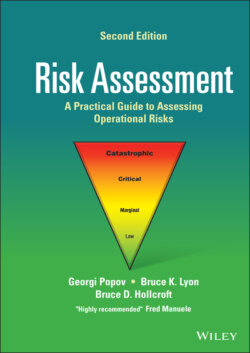Читать книгу Risk Assessment - Georgi Popov - Страница 24
1.8 OSHA Requirements
ОглавлениеOSHA’s Rule For Process Safety Management Of Highly Hazardous Chemicals, 1910.119, issued in 1992, applies to employers at about 50 000 locations, many of which are not considered chemical companies. With respect to requirements for hazards analyses being included in standards, this OSHA standard merits a review by safety practitioners. The standard requires that:
The employer shall perform an initial hazard analysis (hazard evaluation) on processes covered by this standard. The process hazard analysis shall be appropriate to the complexity of the process and shall identify, evaluate, and control the hazards involved in the process. The employer shall use one or more of the following methodologies that are appropriate to determine and evaluate the hazards of the process being analyzed:
What‐If;
Checklist;
What‐If/Checklist;
Hazard and Operability Study (HAZOP);
Failure Modes and Effect Analysis (FMEA);
Fault Tree Analysis; or
An appropriate equivalent methodology.
Although affected employers are to make hazards analyses, the methodologies previously listed are risk assessment techniques. This author’s recollection is that commenters on the standard prior to its promulgation expressed concern over having to use probability data – of which there is little that is statistically sound. OSHA responded favorably. This appears in the preamble to the standard.
OSHA has modified the paragraph (editorial note – paragraph on consequence analysis) to indicate that it did not intend employers to conduct probabilistic risk assessments to satisfy the requirement to perform a consequence analysis.
However, all risks are not equal. Some require attention prior to others. And managements do assess and prioritize risks in their decision‐making when determining which resources are to be allocated for individual projects.
